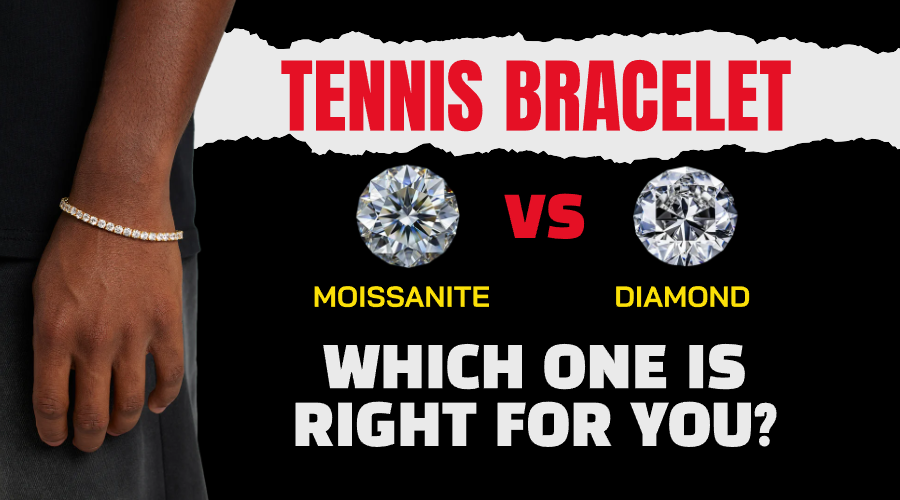
Diamond vs Moissanite Tennis Bracelet: Which One is Right for You?
When it comes to luxury jewelry, the tennis bracelet is a timeless and sophisticated accessory. Whether for a special occasion or everyday elegance, this sparkling piece enhances any outfit. Traditionally crafted with diamonds, tennis bracelets now have a stunning and affordable alternative—moissanite. If you're debating between a diamond vs. moissanite tennis bracelet, this guide will help you make the best choice.
What Is a Tennis Bracelet?
Before diving into the diamond vs. moissanite comparison, it’s essential to understand what makes a tennis bracelet unique. A tennis bracelet features a continuous line of gemstones—typically set in gold, platinum, or silver—designed for maximum brilliance and flexibility.
The term "tennis bracelet" became famous in 1987, when professional tennis player Chris Evert lost her diamond bracelet during a match at the U.S. Open. The game was paused as she searched for it, sparking widespread recognition of the jewelry style. Today, tennis bracelets remain a must-have in fine jewelry collections.
Here's your content in a table format for a clearer comparison between diamond and moissanite tennis bracelets:
| Comparison Factor | Diamond Tennis Bracelet | Moissanite Tennis Bracelet |
|---|---|---|
| Origin & Composition | Naturally formed under high pressure and temperature; composed of pure carbon | Made of silicon carbide; originally found in meteorites but now lab-created |
| Brilliance & Sparkle | Displays brilliance (white light reflection) and fire (rainbow dispersion) with a subtle sparkle | Higher refractive index (2.65 vs. 2.42), creating more intense sparkle with noticeable rainbow flashes |
| Hardness & Durability | Mohs hardness of 10, the hardest natural substance, extremely scratch-resistant | Mohs hardness of 9.25, highly durable but slightly more prone to scratches than diamonds |
| Price & Affordability | Expensive due to rarity and mining costs; ranges from $2,000 - $50,000+ | 80-90% cheaper than diamonds; costs between $300 - $3,000, offering a budget-friendly alternative |
| Ethical & Environmental Considerations | Some diamonds are linked to conflict mining; ethical sourcing can be challenging despite "conflict-free" labels | Lab-created, making it a sustainable and ethical choice with no mining impact |
| Color Differences | Graded from D (colorless) to Z (light yellow/brown); colorless diamonds are the most valuable | Generally near-colorless but may have slight yellow or green tints, especially in larger stones |
| Resale Value & Longevity | Holds value better and has higher resale potential | Lower resale value since it's lab-created and more affordable upfront |
| Pros | - Classic and prestigious choice - Extremely durable (Mohs 10) - Higher resale value - Natural gemstone with historical significance |
- More affordable (80-90% cheaper than diamonds) - Greater brilliance and fire - Ethical and sustainable (lab-created) - Nearly as durable as diamonds (Mohs 9.25) |
| Cons | - Expensive - Ethical concerns regarding mining - Requires certification for quality assurance |
- More rainbow sparkle, which may look different from a diamond - Lower resale value - Slight tint in larger stones |
Which One Should You Choose?
-
Choose a diamond tennis bracelet if:
- You want a classic, high-value piece
- You prioritize durability and prestige
- You are willing to pay a premium
-
Choose a moissanite tennis bracelet if:
- You want a budget-friendly alternative
- You appreciate extra brilliance
- You prefer an ethically sourced gemstone
Both options offer beauty and elegance, making them excellent choices depending on your budget, values, and personal style.

